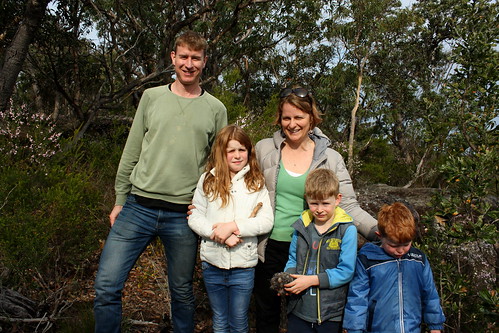Tiliqua scincoides
Here’s an animal that every Australian knows. The Blue Tongue Lizard is common in bushland and suburban backyards of Eastern Australia, but even the familiar has the capacity to surprise as I found out with this one!
The family was visiting friends in Gerringong 1 1/2 hrs south of Sydney. The kids came running in from the back yard saying they they had found a snake. We went out to take a look and found what was clearly a Blue Tongue Lizard half obscured under the back step. It’s legs were tucked under it’s body so it’s understandable that the kids though it was a snake. There was a small crowd of us watching it when it started to slowly lumber out of it’s hiding spot. The lizard seemed quite fat even for a Blue Tongue which I commented on, then all of a sudden a fully formed baby lizard popped out from the underside! It was a mum giving birth!

I’d assumed that Blue Tongues laid eggs like almost every other reptile, but a quick search confirmed that they, along with Red Bellied Black Snakes do indeed give birth to live young.
With enough food Blue Tongues are able to breed every year. They have litters of around 10 young at a time, but have been known have up to 25. Once born the young are independent and will disperse within a few days.
There are a number of species of Blue Tongue, they are found in Australia, New Guinea and Indonesia. I believe this one was a Eastern Blue-tongued Lizard. Eastern Blue-tongued Lizards are found within a few hundred Kms of the coast all around North, South and Eastern Australia. They are a silvery colour with dark banding across their body and tail, they can grow up to 60cm. If handled roughly by the tail Blue Tongues may drop their tail. The tail stump rapidly heals and a shorter regenerated tail grows back after a while. It looks like this has happened to the mum in the picture.
Resources and References









